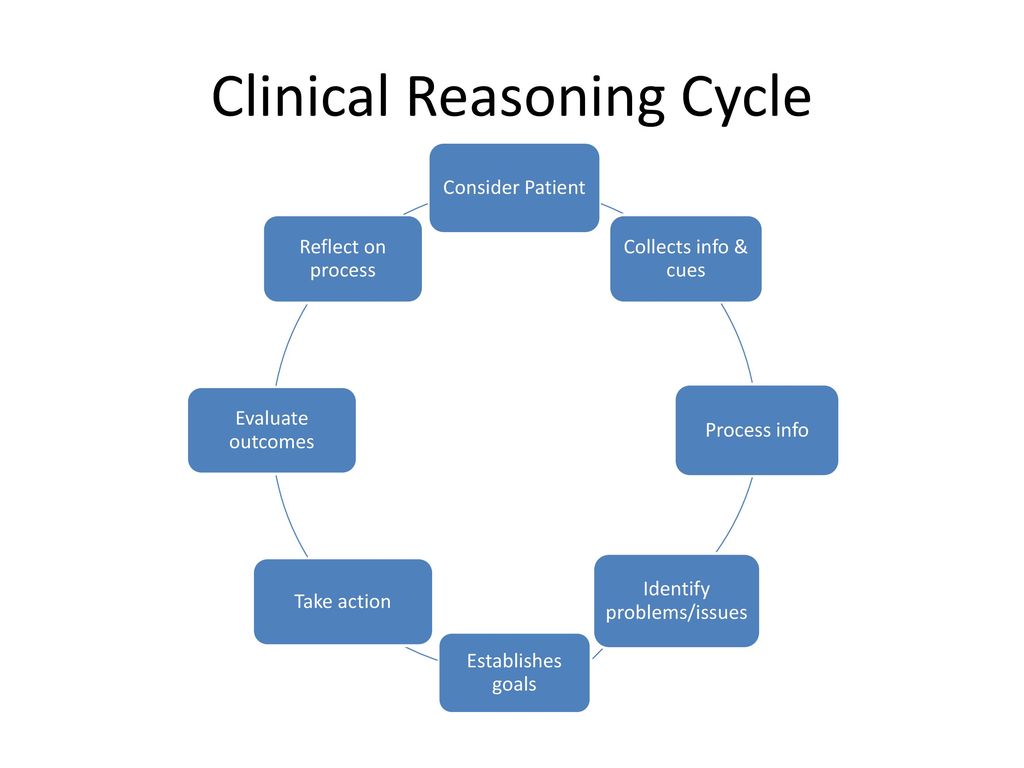
Scenario 2: CNA253/255 Clinical Reasoning Case-Study
| Consider the patient situation | Mr Robert Brown is a 30 year old male who was hit by a car that failed to give way whilst he was crossing at a pedestrian crossing. The impact caused him to be thrown into a nearby garden bed. Passers-by came to his aid immediately. They helped him up and noticed he was bleeding from a laceration to the back of the head. He sustained no other obvious injuries. An ambulance was called. He has been at hospital for nearly 24 hours and was transferred to your ward overnight. It is now 0800 and you have just come on shift. You enter his room and he seems to be unsure of where he is (requires orientation) and keeps asking other patients the location of his dog (whom Robert was walking at the time of the accident). | |||||||||||||||||
| Collect Cues | Review:
Examine existing documentation via the assessment resources folder in MyLO. |
|||||||||||||||||
| Gather new information (patient assessment): Upon undertaking an assessment of Mr Brown you obtain the following new information: Vital signs BP: 160/95 Pulse: 111bpm RR: 18 SaO2: 98% Temp 36.6 Other data GCS: 13 (patient seems confused/agitated) and keeps rubbing at his head and mumbling that it hurts. Whilst his movements seem purposeful, he does not obey commands or accurately answer specific questions). There appears to be no GCS documentation since transfer to the ward. Patient in bed opposite refers to Mr Brown and tells you: ‘that poor young bloke, he’s been up half the night. He keeps going on about his dog and gets lost when he goes to the bathroom’ Wound chart: no further documentation evident. However, upon looking at Mr Browns head wound from a distance, dressing appears blood soaked and has partly come off. There are smears of blood on his pillow. |
||||||||||||||||||
| Recall:
Recall and apply your existing knowledge to the above situation to ensure you have a broad understanding of what is/may be occurring before proceeding with the rest of the cycle (self-directed) |
||||||||||||||||||
| Process Information | Interpret:
List the data that you consider to be normal/abnormal below (not included in word count) |
|||||||||||||||||
| Normal | Abnormal | |||||||||||||||||
| Relate& Infer:
· Relate the two most significant abnormal findings to the underlying physiology/patho physiology to justify why it is considered abnormal in this context. · Based on your interpretation of all the information/cues presented, form an overall opinion on what may be happening and justify your answer (400 words). |
||||||||||||||||||
| Predict:
What may happen to your patient if you take NO action and why? (100 words) |
||||||||||||||||||
| Identify the Problem/s | List in order of priority at least three key nursing problems (not included in word count) | |||||||||||||||||
| Establish Goals & Take Action | From the above (identify problems), use the top 2 nursing problems identified and for each of these establish one goal and thenlist related actions you would undertake, including detailing any relevant nursing considerations (350 words) | |||||||||||||||||
|
||||||||||||||||||
| Evaluate outcomes& Reflect on new learning | Briefly describe how you would evaluate the effectiveness of the care provided and reflect on how this encounter has informed your nursing practice if you were to encounter a similar situation in the future (150 words). | |||||||||||||||||
ORDER This CNA253/255 Clinical reasoning Assignment NOW And Get Instant Discount
Get SNPG962 Promoting Clinical Excellence Assignment written by experts.



